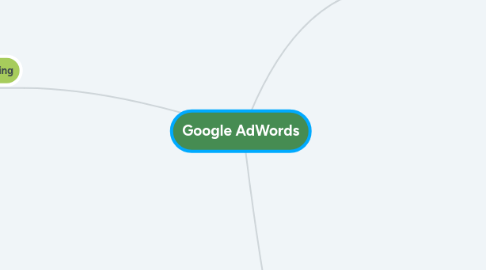
1. Remarketing
1.1. Behavior is the crux of a sound remarketing strategy.
1.2. Remarketing Lists for Search Ads
1.2.1. Bidding on Your Brand or Competitor Keywords
1.2.1.1. Get rid of the expensive CPCs and lower those conversion rates by working with your competitors to make sure they’re focused on their most qualified visitors, so they leave your most qualified visitors alone.
1.2.2. Targeting or Excluding Those Who Have Converted
1.2.3. Combining with Demographic Bidding
1.2.3.1. You don’t have to limit RLSA campaigns to just looking at those who have been to a certain page on your website.
1.2.3.2. Now you’ve found a way to incorporate demographic bidding, remarketing and keyword targeting all in one. For someone who’s on a limited budget, the more qualified clicks you can get, the better.
1.2.4. “When it comes to Remarketing Audiences for Search Ads (RLSA), you’ll reap more results if you enhance the bids at a higher rate (more than 50%). If the bid modifier is too small (10%), it’s almost not even worth it.”
1.3. Core Remarketing Lists
1.3.1. [Engagement Pack] Core Remarketing Lists
1.4. Remarketing Audience Intent Map
1.4.1. Pre-research (low intent, just browsing): All Visitors (30 Days), All Visitors (3 Days), Home Page Visitors
1.4.2. Research (so-so intent, informational): Viewed Multiple Blog Posts, Webinar Registration, Content Download, Used Free Tool
1.4.3. Recommendation (high intent, transactional): Pricing Page Visitors, Free Trial, Demo Completed (No Purchase)
2. PPC Audit
2.1. Segment the data
2.1.1. Segment by Time Period
2.1.1.1. see the full marketing funnel from impression through to conversion, as well as the cost and revenue metrics
2.1.2. Segment by Day of Week
2.1.2.1. As a rule of thumb, you need 30 conversions average per segment to draw reliable conclusions.
2.1.3. Segment by Hour of Day
2.1.3.1. find research clicks: we can quickly sense check that in the Path Length report; Tools > Attribution > Paths > Path Length.
2.1.4. Segment by Location
2.1.5. Segment by Settings
2.1.6. Segment by Device
2.1.7. Segment by Campaign
2.1.8. Segment by Landing Page
2.1.9. Segment by Search Query
2.1.10. Segment by Keyword
2.1.10.1. look at what percentage of our keywords are below first page bid.
2.1.10.2. quality score
2.1.10.2.1. if low QS > Hover over the speech bubble in status to see why precisely we’ve got a low quality score on some of these keywords.
2.1.10.3. keywords with low search volume
2.1.10.4. It’s also important to look at overall match type strategy.
2.1.10.4.1. over 60% of spend is going through broad and phrase match keywords. Ideally it should be less than 20%.
2.1.10.5. check negative keywords and make sure they aren’t accidentally limiting your traffic.
2.1.11. Segment by Ad Group
2.1.12. Segment by Ad Copy
2.1.13. Segment by Extensions
2.2. Identify best / worst
2.3. Find differences
2.4. Research context
2.5. Recommend action
3. Attribution
3.1. Attribution Report
3.1.1. The Attribution Overview Report
3.1.1.1. It gives you a top-level view of your conversion paths. It tells you the number of conversions you received along with additional data that tells how many days, clicks and impressions lead to the conversions.
3.1.2. The Conversion Reports
3.1.2.1. Click Assisted Conversions
3.1.2.1.1. This shows the number of conversions that are assisted by clicks for each keyword excluding the last click.
3.1.2.2. Impressions Assisted Conversions
3.1.2.2.1. This shows the conversions that are assisted by impressions before the last click.
3.1.3. The “Cross-Device” Activity Reports
3.1.4. The “Paths” Reports
3.1.4.1. This report shows you the most common path that your customers take to complete a conversion.
3.1.5. The “Click Analysis” Reports
3.1.5.1. First Click Analysis
3.1.5.1.1. This report shows you which keywords brought customers to your website.
3.1.5.2. Last Click Analysis
3.1.5.2.1. This report tells you about the keywords that completed the conversion.
